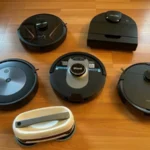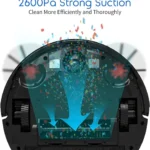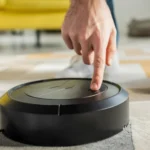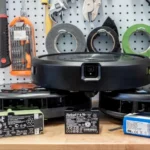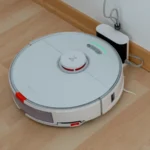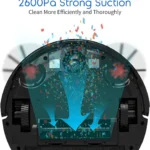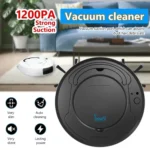Have you ever experienced frustration when your smart vacuum cleaner doesn’t perform as well as it should? It’s possible that you might be making some common charging mistakes that are adversely affecting your vacuum’s battery life and performance. Proper charging is one of the most crucial aspects of maintaining your vacuum’s functionality. If you want your vacuum cleaner to work efficiently and last as long as possible, then it’s important to avoid these charging mistakes. In this article, we’ll explore some of the most common charging mistakes and offer some helpful tips to ensure that your smart vacuum cleaner is always operating at its best.
Why Avoid Charging Mistakes?
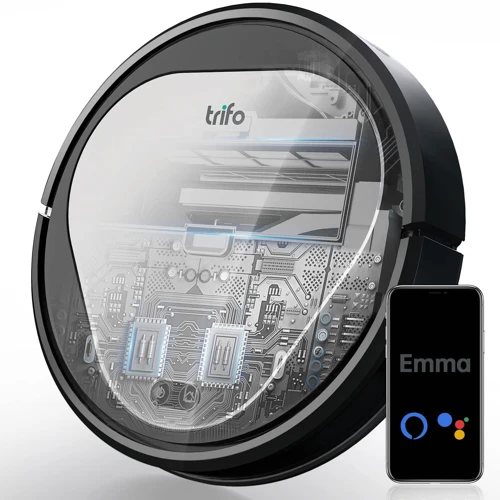
Charging your smart vacuum cleaner may seem like a simple task, but even the slightest mistake can have a major impact on its performance and lifespan. It’s important to avoid charging mistakes for two main reasons: to prolong battery life and to maintain optimal performance. Overlooking these factors can lead to a reduction in cleaning efficiency and ultimately, the need to replace your vacuum sooner than expected. So, let’s take a closer look at why you should take charging your smart vacuum seriously and what charging mistakes to avoid. If you’re interested in extending your smart vacuum’s battery life, check out our tips on extending battery life.
1. Prolongs Battery Life
Prolonging the battery life of your smart vacuum cleaner is essential for maintaining its efficiency over time. By avoiding certain charging mistakes, you can ensure that your device’s battery remains in excellent condition for longer.
Here are some ways that avoiding charging mistakes can help prolong the life of your smart vacuum cleaner’s battery:
- Prevent Damage: Overcharging, charging with a damaged cable, or not allowing for a full charge can all lead to battery damage. By avoiding these charging mistakes, you can prevent your smart vacuum cleaner’s battery from being damaged, which can lead to a shorter battery life.
- Limit Heat: Overcharging can also cause the battery to overheat, which can cause permanent damage to the battery life. By ensuring you don’t overcharge your device, you can prevent the battery from overheating, thus prolonging its life.
- Avoid Memory Effect: Regularly only charging your vacuum for a short period before returning it to the charger can cause a phenomenon called the memory effect. This can cause a decrease in the overall battery life, making it essential to ensure you allow for a full charge as per the manufacturer’s instructions.
- Optimized Charging Cycle: Lastly, by avoiding the above-mentioned charging mistakes, you can ensure that the charging cycle remains optimized. This optimization is essential for ensuring the battery stays in shape.
It’s always a good idea to follow the best practices for charging your smart vacuum cleaner’s battery, such as using the original charger, using a surge protector, avoiding extreme temperatures, and keeping the charging area clean. By following these practices, you can prolong the battery life of your smart vacuum cleaner, reducing the need for regular battery replacements.
While there may be alternative charging options, it’s always best to stick with the manufacturer’s recommendations to avoid any potential damage. For more tips on charging your smart vacuum cleaner’s battery for maximum efficiency, check out our guide to charging smart vacuum tips and smart vacuum cleaner charging cycle.
By taking care of your smart vacuum cleaner’s battery and avoiding common charging mistakes, you can prolong its life, reducing the need for replacement and ensuring optimal performance over time. Consider using smart vacuum storage tips to keep your device in top condition when not in use.
2. Maintains Optimal Performance
Maintaining optimal performance is crucial for any smart vacuum cleaner user. A poorly charged battery can lead to reduced suction power, shorter battery life, and other performance-related issues. Avoiding charging mistakes is essential for optimal performance.
Here are the common charging mistakes that you have to avoid:
- Overcharging your smart vacuum cleaner
- Charging the smart vacuum cleaner with a damaged charging cable
- Not allowing the battery to fully charge
Avoiding these common charging mistakes can help keep your smart vacuum cleaner in optimal condition. For example, overcharging the battery can cause it to heat up and shorten its lifespan. Charging the vacuum cleaner with a damaged cable can not only damage the battery but also pose a safety hazard. And not allowing the battery to fully charge can lead to shorter battery life and reduced suction power.
Here are some best practices for charging your smart vacuum cleaner:
- Follow the manufacturer’s instructions: Always refer to the manufacturer’s instructions for charging your smart vacuum cleaner. Some manufacturers may have specific charging requirements.
- Use a surge protector: Using a surge protector can help protect your vacuum cleaner from power surges and voltage fluctuations.
- Avoid extreme temperatures: Charging your smart vacuum cleaner in extreme temperatures can damage the battery and shorten its lifespan. Avoid charging it in very hot or very cold environments.
- Keep the charging area clean: A clean charging area not only looks tidy but also reduces the risk of damage to the charging cable and the vacuum cleaner. Make sure the charging area is free of dust and debris.
Following these best practices can help you charge your smart vacuum cleaner safely and maintain its optimal performance. By avoiding charging mistakes and following the best practices, you can extend the battery life and ensure that your vacuum cleaner serves you for a long time.
As a side note, if you are looking for storage tips for your smart vacuum cleaner, check out our article on /smart-vacuum-storage-tips/. And if you’re interested in alternative charging options for your smart vacuum cleaner battery, read our article on /alt-charging-options-smart-vacuum-battery/.
Common Charging Mistakes to Avoid
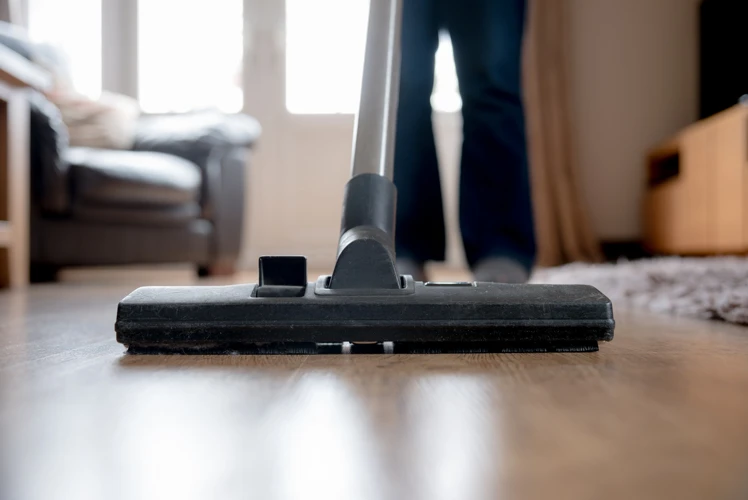
When it comes to charging your smart vacuum cleaner, there are a few common mistakes that can have a negative impact on your device’s battery and performance. It’s important to avoid these mistakes to ensure that your vacuum cleaner is running optimally and its battery life is prolonged. In this section, we will discuss several of the most common charging mistakes that you should avoid to keep your smart vacuum cleaner working effectively. By following these tips, you can avoid some of the most common pitfalls and ensure that your device is always charged and ready to go.
1. Overcharging
Overcharging is one of the most common charging mistakes that you can make when charging your smart vacuum cleaner. It happens when you leave your vacuum cleaner plugged in for an extended period, even after the battery is fully charged. This practice can cause severe damage to both the battery and the device.
Here are some of the risks associated with overcharging:
- Battery damage: Overcharging causes the battery to overheat, which can have a damaging effect on its overall lifespan. The battery may even expand or rupture, rendering the vacuum cleaner unusable.
- Reduced performance: Overcharging affects the vacuum cleaner’s overall performance, causing it to lose suction and run time more quickly.
- Increased energy bills: Overcharging consumes more energy than needed, resulting in higher energy bills.
To avoid overcharging, always use the original charger that came with your vacuum cleaner, and avoid charging it for longer than the manufacturer’s recommended time. Once the battery is fully charged, make sure to unplug the charger immediately. This reduces the risk of the battery overheating and prolongs the battery’s lifespan.
It’s also essential to ensure that your vacuum cleaner’s battery has enough charge to complete its cleaning cycle. To do so, always charge the battery fully using the recommended charger charging method before using it.
2. Charging with a Damaged Cable
One of the most common charging mistakes that can harm your smart vacuum cleaner is using a damaged cable. This mistake is often overlooked, but it can cause serious damage to your device’s battery or even pose a safety hazard. It is crucial to ensure that the charging cable is in good condition before plugging it in.
What are the risks of charging with a damaged cable?
Using a damaged charging cable can lead to various risks, including:
| Risks of using a damaged charging cable |
|---|
| Short circuit |
| Electrical shock |
| Overheating |
| Battery damage |
A short circuit can occur when the insulation of the charging cable is damaged, leading to a direct connection between the positive and negative terminals. This can cause overheating or even a fire. Additionally, using a cable with exposed wires can result in electrical shock, which can be dangerous.
If the charging cable is damaged, it may not provide a stable connection between the charger and the smart vacuum cleaner. This can lead to intermittent charging, which over time can damage the battery’s capacity and shorten its lifespan.
What can you do to prevent damage?
To prevent the risks associated with charging with a damaged cable, follow these best practices:
| Best practices for preventing cable damage |
|---|
| Regularly inspect the charging cable for damage, fraying, or exposed wires |
| Replace any damaged charging cables before use |
| Avoid bending, twisting or pulling the cable when plugging it in or out |
| Store the charging cable in a safe, dry place when not in use |
Regularly inspecting the charging cable for damage can help you spot any issues before they lead to serious risks. If you notice any signs of damage, such as fraying or exposed wires, replace the cable immediately to prevent any further damage.
It is also important to avoid bending, twisting, or pulling the cable when plugging it in or out. This can put unnecessary strain on the cable and damage the insulation or wires inside.
By following these best practices, you can ensure that your smart vacuum cleaner is charged safely and properly, without causing any damage to the battery or posing a safety hazard.
3. Not Allowing for Full Charge
One of the most common charging mistakes that smart vacuum cleaner owners make is not allowing the device to charge fully. When you interrupt the charging process before the battery is fully charged, you risk reducing the lifespan of the battery and decreasing the overall performance of the device. Here are a few reasons why allowing for a full charge is crucial:
- Better battery performance: When you only partially charge your smart vacuum cleaner, the battery won’t be able to provide maximum power and will deplete faster, which translates to a shorter runtime for your device. Additionally, frequent partial charges can cause the battery to develop a “memory effect,” where it starts to remember the reduced capacity and limits its overall storage abilities. For optimal performance, always aim to charge your vacuum cleaner fully before using it.
- Longer battery lifespan: Lithium-ion batteries, which most smart vacuum cleaners use, have a limited number of charge cycles before the battery begins to degrade. A charge cycle refers to the process of using all of the battery’s power and then fully recharging it. If you regularly charge your vacuum cleaner to only a partial capacity, you use up your charge cycles faster and reduce the overall lifespan of your battery. Allowing for a full charge helps to ensure that you use up fewer charge cycles and prolong the life of your vacuum cleaner’s battery.
- Improves battery health: It’s important to note that leaving your vacuum cleaner on charge for too long can be detrimental to its health, but failing to allow for a full charge on a regular basis can be even worse. Undercharging can lead to a malfunctioning battery, which can damage other internal components of your vacuum cleaner. Consistently allowing your device to complete a full charge helps to ensure that the battery’s chemical processes remain healthy and efficient.
Avoiding the mistake of not allowing for a full charge is relatively easy. Simply ensure that your vacuum cleaner is left plugged in for the recommended amount of time until it reaches 100% charge. You can check your device’s documentation to find out what the optimal charging time is for your particular model. Following the manufacturer’s instructions, avoiding the use of a damaged cable, and keeping the charging area clean are all best practices that can improve the longevity of your battery and vacuum cleaner.
Best Practices for Charging Your Smart Vacuum Cleaner
Ensuring that your smart vacuum cleaner is charged properly is essential to maintain its peak performance and increase its longevity. It can be confusing to know the best practices for charging your device, but by following these tips, you can keep your smart vacuum cleaner running smoothly and with minimal maintenance needs. Here are some of the best practices you should implement when charging your smart vacuum cleaner.
1. Follow the Manufacturer’s Instructions
To ensure that you are charging your smart vacuum cleaner correctly, you should always follow the manufacturer’s instructions. Below are some essential tips that you should keep in mind:
- Read the Manual: Start by carefully reading the manual or user guide that came with your smart vacuum cleaner. This guide contains valuable information on the proper charging procedure and can help prevent mistakes that might damage the batteries or the device itself.
- Use the Right Charger: Use only the charger that came with your smart vacuum cleaner or a recommended replacement. Avoid using cheap, third-party chargers that might damage the device or pose a safety risk.
- Check the Voltage: Make sure that the voltage requirements of the charger match those of your smart vacuum cleaner. Using the wrong voltage can lead to overcharging, overheating, or even electrical damage.
- Unplug When Fully Charged: Most modern smart vacuum cleaners have an indicator light that shows when they are fully charged. As soon as the light turns green, unplug the charger to prevent overcharging, which can damage the battery and reduce its overall lifespan.
- Avoid Over-Discharging: Over-discharging the battery can also reduce its lifespan. As a rule of thumb, avoid using your smart vacuum cleaner until the battery is completely drained, but also avoid leaving it unused for extended periods with an empty battery.
By following these guidelines, you can ensure that your smart vacuum cleaner is charged correctly and safely, extending its lifespan and keeping it operating at optimal performance levels. Don’t take charging for granted, and always follow the manufacturer’s instructions to avoid common charging mistakes that might damage your device.
2. Use a Surge Protector
When it comes to charging your smart vacuum cleaner, it is essential to consider using a surge protector. A surge protector is a device that protects your vacuum cleaner from voltage spikes, power surges, and electrical fluctuations that could damage your device, leading to costly repairs or replacements.
The following table outlines the benefits of using a surge protector:
| Benefits of Using a Surge Protector |
|---|
| 1. Protects your vacuum cleaner from power surges: A power surge is a sudden spike in electrical current that can reach your device and damage it. A surge protector acts as a buffer between your device and the electrical outlet, preventing any unwanted electrical fluctuations from reaching your vacuum cleaner. |
| 2. Increases the lifespan of your vacuum cleaner: By preventing power surges and voltage spikes, a surge protector can help to prolong the lifespan of your smart vacuum cleaner. This means that your device can continue to function efficiently for a longer period, saving you money on repairs and replacements. |
| 3. Provides peace of mind: Knowing that your device is protected from unexpected electrical fluctuations can provide you with peace of mind, especially if you live in an area with frequently unstable power supply. |
Using a surge protector is an essential step in ensuring that your smart vacuum cleaner remains protected from power surges and voltage spikes. It can help prolong the lifespan of your device, save you money in the long term, and provide you with the peace of mind you deserve. Make sure to invest in a good quality surge protector that is compatible with your vacuum cleaner and follow the manufacturer’s recommendations for use.
3. Avoid Extreme Temperatures
Extreme temperatures can damage the batteries of your smart vacuum cleaner, affecting their overall lifespan and performance. As a result, it’s important to avoid exposing the device to temperatures that are too hot or too cold. Here are a few specific things you can do to prevent charging mistakes related to temperature:
- Avoid placing the vacuum cleaner in direct sunlight: Direct sunlight can cause the device to overheat, damaging the battery in the process. Make sure you place the vacuum cleaner in a shaded area, away from direct sunlight.
- Avoid exposing the vacuum cleaner to extremely cold temperatures: Cold temperatures can also harm the device’s battery. If you live in a cold climate, make sure you store your vacuum cleaner in a space that’s at room temperature at all times.
- Avoid storing the vacuum cleaner in a car: Cars can become extremely hot during the summer and quite cold during the winter. To prevent damage to your smart vacuum cleaner’s battery, avoid storing it in a vehicle.
By taking steps to avoid exposing your smart vacuum cleaner to extreme temperatures, you can ensure that its battery remains healthy and fully functional for as long as possible. Remembering this simple advice can go a long way in ensuring you don’t make any charging mistakes that could negatively impact the performance of your device.
4. Keep the Charging Area Clean
Keeping the charging area clean is crucial for maintaining the functionality and efficiency of your smart vacuum cleaner. Here are some tips to help you keep your charging area clean:
1. Use a Dustbin
In order to keep the charging area clean, it’s important to use a dustbin. A dustbin is a great way to collect any dust or debris that may be in the charging area. By using a dustbin, you can easily remove any accumulated dirt, dust or debris and ensure that your charging area is always clean.
2. Avoid Clutter
Another important aspect of keeping your charging area clean is avoiding clutter. Make sure that any objects near the charging station aren’t obstructing the charging cable, and are placed away from the charging area. This will make it easier to clean the area and avoid damaging the charging cable.
3. Wipe the Charging Station
It’s important to occasionally wipe down the charging station with a damp, soft cloth to remove any dust or debris that has accumulated. This can be done following the manufacturer’s instructions for the product.
4. Check for Dust Build-Up in the Vacuum Cleaner
Dust and debris can also accumulate in the smart vacuum cleaner itself, reducing its performance and obstructing the charging contacts. It’s important to check and clean the vacuum cleaner for any dust build-up, ensuring that it operates smoothly and that the charging contacts are free of debris.
By keeping these tips in mind and implementing them into your cleaning routine, you can ensure that your smart vacuum cleaner stays clean, functions reliably, and charges efficiently.
Conclusion
In conclusion, properly charging your smart vacuum cleaner is essential in ensuring its longevity and optimal performance. By avoiding common charging mistakes such as overcharging, using a damaged cable or not allowing for a full charge, you can prolong the battery life and maintain its best performance.
It’s important to always follow the manufacturer’s instructions and use a surge protector to prevent any potential electrical damage. Extreme temperatures can also harm the battery, so it’s best to avoid charging in very hot or very cold environments.
Keeping the charging area clean will not only prevent any damage to the vacuum cleaner but also reduce the risk of any tripping hazards.
Incorporating these best practices into your charging routine will ensure that your smart vacuum cleaner remains in top condition and performs to the best of its abilities for years to come. So, take care of your vacuum cleaner and it will take care of your cleaning needs without any issues!
Frequently Asked Questions
1. Can overcharging damage my smart vacuum cleaner’s battery?
Yes, overcharging can damage your smart vacuum cleaner’s battery, resulting in decreased battery life and performance.
2. Can I use any charging cable for my smart vacuum cleaner?
No, it is important to use the charging cable provided by the manufacturer or a compatible replacement to avoid damaging your smart vacuum cleaner.
3. Should I charge my smart vacuum cleaner before or after use?
It is recommended to charge your smart vacuum cleaner after use to ensure a full charge and to avoid overcharging.
4. Can I leave my smart vacuum cleaner charging overnight?
No, it is not recommended to leave your smart vacuum cleaner charging overnight as it can lead to overcharging and cause damage to the battery.
5. How often should I charge my smart vacuum cleaner?
It is recommended to charge your smart vacuum cleaner after each use or when the battery is low to maintain optimal performance.
6. Can extreme temperatures affect the charging process?
Yes, extreme temperatures can affect the charging process and damage the battery. It is best to avoid charging your smart vacuum cleaner in very hot or cold environments.
7. Is it safe to charge my smart vacuum cleaner on carpet or other combustible surfaces?
No, it is not safe to charge your smart vacuum cleaner on carpet or other combustible surfaces as it can create a fire hazard. It is best to charge on a flat, non-flammable surface.
8. How do I know when my smart vacuum cleaner is fully charged?
Your smart vacuum cleaner should have an indicator light that turns off or changes color when it is fully charged.
9. Can a power surge damage my smart vacuum cleaner’s battery during charging?
Yes, a power surge can potentially damage your smart vacuum cleaner’s battery during charging. It is best to use a surge protector for added safety.
10. What should I do if I suspect my battery is damaged from improper charging?
If you suspect your battery is damaged from improper charging, you should contact the manufacturer for assistance with replacing the battery or repairing the device.

